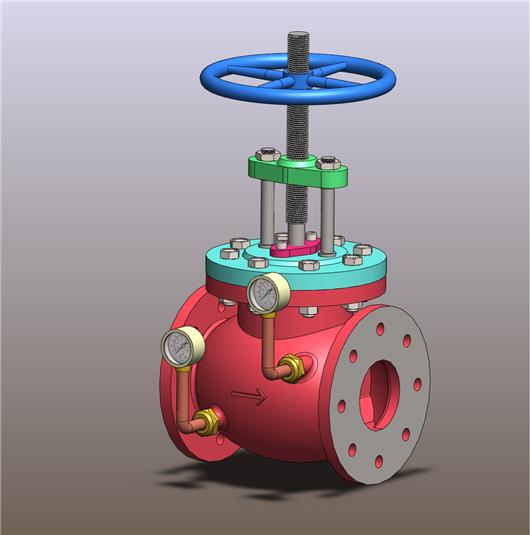A globe valve is a widely used type of valve designed to regulate flow in a pipeline. Its name derives from the spherical shape of its body, though modern variations may differ slightly in appearance. This article delves into the workings of a globe valve, explaining its components, operational principles, and applications.
Components of a Globe Valve
1. Body: The main structure that houses the internal components. The body is typically spherical or cylindrical.
2. Bonnet: An additional piece that covers the opening in the body and supports the stem and other internal parts.
3. Stem: A rod that connects the actuator (handwheel or automatic actuator) to the valve disc.
4. Disc: Also known as a plug, this component moves up and down to open or close the valve, controlling the flow.
5. Seat: The surface inside the valve body against which the disc seals to stop the flow.
6. Actuator: A device, often a handwheel, lever, or electric actuator, used to manually or automatically operate the valve.
How a Globe Valve Works
The operation of a globe valve is based on the vertical movement of the disc, which controls the flow of the medium (liquid or gas) through the valve.
1. Open Position: When the valve is open, the disc is lifted away from the seat. The flow enters the valve body, travels through the space between the disc and seat, and exits through the outlet port. The flow path typically involves a change in direction, often at right angles, which can result in a pressure drop across the valve.
2. Closed Position: To stop the flow, the actuator (e.g., handwheel) is turned to lower the stem, which moves the disc down onto the seat, creating a seal. This prevents the medium from passing through the valve.
3. Throttling: A key feature of globe valves is their ability to regulate flow. By partially raising or lowering the disc, the valve can precisely control the flow rate. This makes globe valves ideal for applications requiring moderate to fine control over flow, such as in cooling systems or fuel oil systems.
Flow Characteristics
The globe valve’s design typically results in a tortuous flow path, causing a higher pressure drop compared to other valves like gate or ball valves. However, the advantage is in its superior throttling capability and tighter shutoff, making it suitable for applications where precise flow control is essential.
Applications
Due to its versatility and effective flow control, the globe valve is used in various applications, including:
- Water supply systems: For regulating flow and pressure.
- Fuel oil systems: Where precise control is needed to manage the flow of fuel.
- Cooling water systems: To maintain desired temperatures by adjusting the flow of coolant.
- Steam systems: For managing steam flow in industrial processes.
Advantages and Disadvantages
Advantages:
- Excellent throttling capability: Provides fine control over flow rates.
- Good shutoff characteristics: Offers tight sealing to prevent leaks.
- Durable and reliable: Typically long-lasting and capable of handling high-pressure applications.
Disadvantages:
- Pressure drop: The tortuous flow path can lead to significant pressure loss.
- Not ideal for large flow applications: Better suited for moderate flow rates.
Conclusion
The globe valve is an essential component in many industrial and commercial systems, prized for its precise control over fluid flow. Understanding its design and operation can help in selecting the right valve for specific applications, ensuring efficiency and reliability in managing pipeline systems.
#globevalve #ouweivalve #valve

